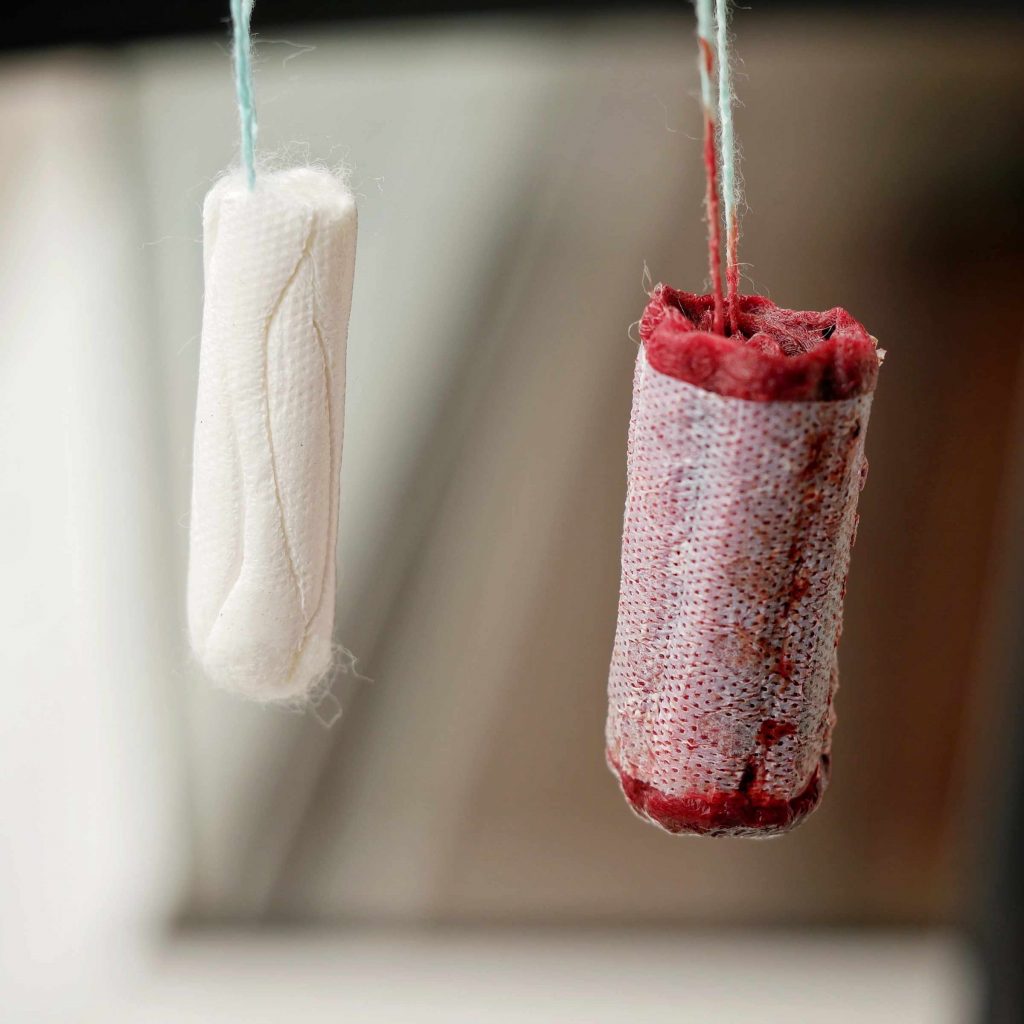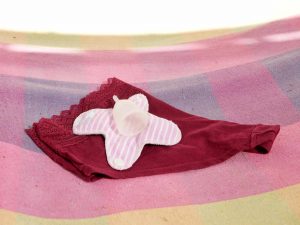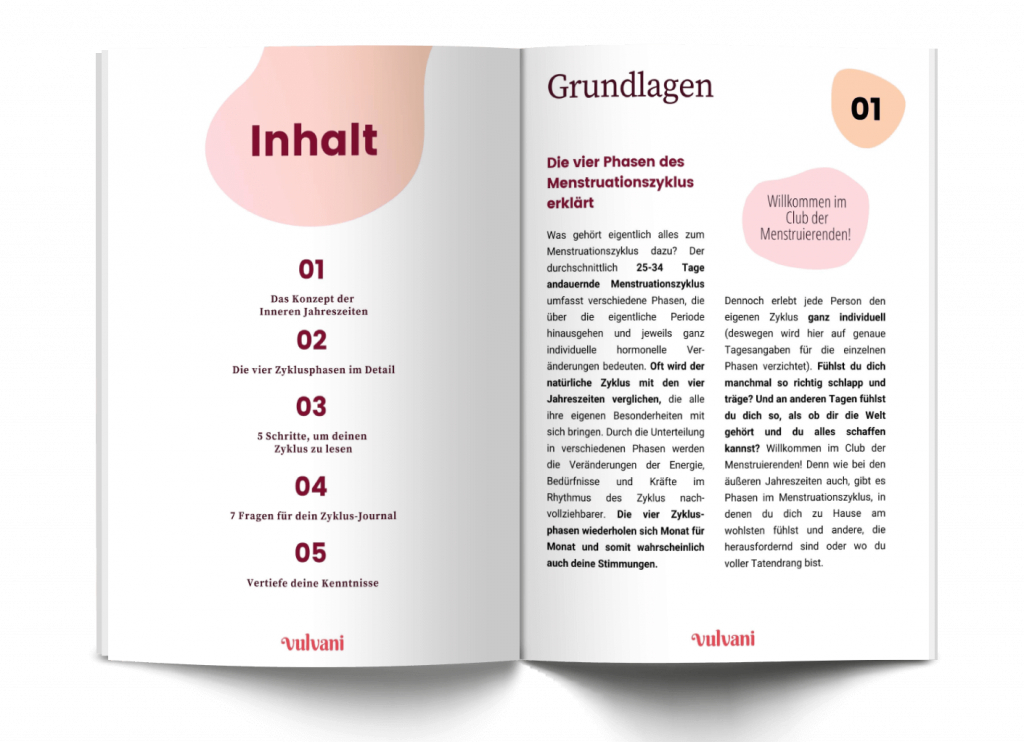
Discovering your menstruation as a spiritual practice
Yasmine understands her menstruation as a spiritual practice and shares in this interview how she is connecting more with her own body through cycle awareness.

Menstruation causes waste? Yes, and not just a small amount at that! Half of the population will experience about 450 periods from the first menstruation to menopause. On average, menstruation lasts over 40 years, from 12 to 52 years old. In the course of their lives, each menstruating person uses an average of around 14,000 disposable tampons and pads. But who has ever seriously thought about the impact of disposable products on their budget or the environment?
Since there are no official studies in Germany on how much a menstruating person spends on menstrual products in their life, we will quickly give you a simple calculation. In order to not to make the calculation too complicated, we will simply assume five menstrual days per cycle and consider only the most necessary additional costs. If only tampons and panty liners are used, the costs for the following calculation amount to around 6.60 $ per cycle:
20 tampons x 0,22 $ per piece = 4,40 $
10 pantyliners x 0,22 $ per piece = 2,20 $
__________________
4,40 $ for tampons + 2,20 $ for pantyliners = 6,60 $ per cycle
450 periods x 6,60 $ per cycle = 2.970,00 $ lifetime
In order to cover the basic annual need for disposable menstrual products, a menstruating person spends an average of about 80.00 $. With a total of 450 periods in life, the costs for tampons and panty liners are around 3,000 $. This includes neither pads nor other menstrual prodcuts. Also pain medicine or hot-water bottles are not included in this calculation. From an economic point of view, the disposable menstrual products used every month are therefore a lucrative business for manufacturers. This means that the development, marketing and advertising of reusable and sustainable menstrual products is not attractive for many large companies and therefore receives little media attention. The cultural taboos on menstruation also contribute to the success of the disposable menstrual product industry.
Meaning that periods are pragmatically also an expense factor. However, there are good news here: In Germany, menstrual products will only be taxed at the simple rate of 7% as of January 1, 2020. Before that, the maximum rate of 19% VAT was levied on menstrual products. Now it will show whether manufacturers will pass the tax reduction on to consumers or conceal the actual price change through deceptive packaging and other dubious procedures. By the way, Scotland is a role model for the abolition of menstruation costs! Since November 2020 the motto there is: Free period products for all!
A global problem in this context is the environmental impact caused by the regular use of disposable products, some of which are chemically treated. Starting with cotton, for example. The cultivation and transport of cotton consume valuable resources such as water, fuel and human labour. Only to end up in the garbage after only a few hours of use. In Germany, all menstruating people produce more than 20,000 tons of waste with disposable products in the course of their lives. 20,000 tons correspond to 20 million kilos of waste due to menstruation. In terms of quantity – and these are only the menstrual products – these are 170,000 bathtubs filled with menstruation waste. Let us be more aware of the products that come into contact with our bodies and their impact on the environment.

The European Commission was discussing a ban on disposable menstrual products. However, this could not be adopted when the law to reduce the use of disposable plastic products was passed. The reason for this is that disposble menstrual products belong to those items where there are none or only insufficient alternatives accesible.
There are also environmentally friendly and reusable options out there to reduce menstruation waste. These include, for example, menstrual cups, fabric pads, natural sponges, leak-proof underwear or free bleeding, where no products are needed at all. The same alternatives that make menstruation more sustainable for wealthy people, often make it more bearable for people in poorer countries. But only those who know alternative products can use them for years to come and benefit from their advantages. Sustainable menstrual items are often more expensive to buy than conventional disposable products. Over time, however, reusable alternatives can save money. Access to menstrual products is therefore no longer directly linked to a person’s financial situation. It is time to develop sustainable menstrual products and bring them into the mainstream at reasonable prices!



Are you also tired of constantly spending money and creating waste during your menstruation? Then here are some tips for you:
Do you have any other tips for an environmentally friendly period? Then write it down in the comments!



Yasmine understands her menstruation as a spiritual practice and shares in this interview how she is connecting more with her own body through cycle awareness.

What options are there for male birth control? Ailsa delivers an overview of what is available now, and what may come in the future.

Sustainable underwear? The founders of TUKEA talk about fair labour conditions, body diversity and body literacy.
…and empower countless women to make empowered choices about their bodies!

